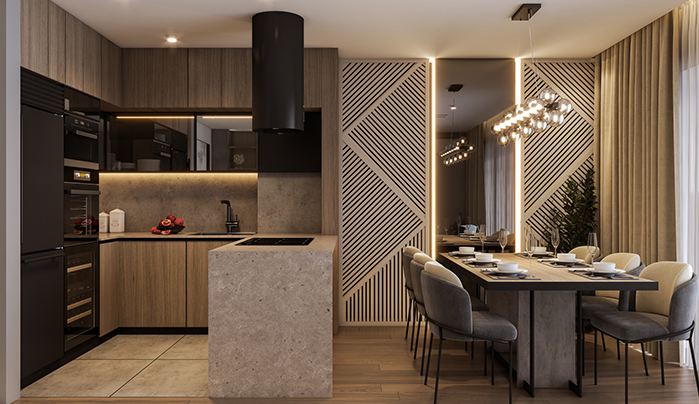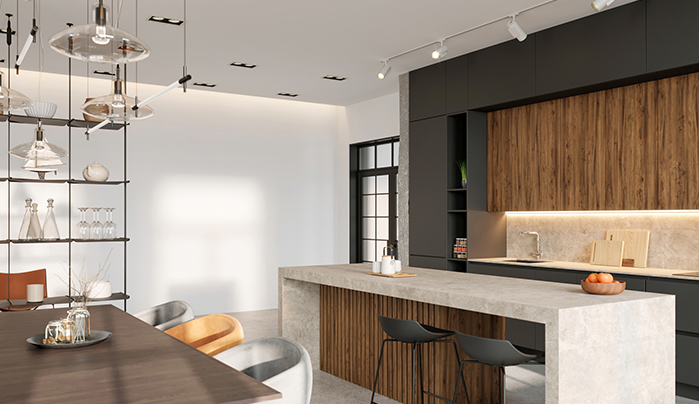
The Indian kitchen is more than just a cooking space, it’s where conversations simmer, recipes evolve and the aroma of spices fills every corner. But behind all that warmth is a constant challenge: moisture. From boiling pots to accidental spills, humidity is a silent culprit that can damage your kitchen cabinets and shelves over time.
Choosing the right material for your kitchen is about more than aesthetics. It’s about ensuring strength, durability, and long-lasting performance in a moisture-heavy environment.

Imagine your lower cabinets beginning to swell or your shelves sagging under heavy cookware. This isn’t just wear and tear, it’s the result of choosing materials that can’t handle moisture or weight well enough. That’s why two popular contenders often come up for Indian kitchens: branded waterproof plywood and ordinary HDHMR boards. Both sound durable but their performance under kitchen conditions tells a different story.

Branded waterproof plywood is built to handle the toughest kitchen conditions. It’s made by pressing layers of wood veneers crosswise and bonding them with a strong phenol-formaldehyde resin. This structure gives the plywood remarkable dimensional stability so that it doesn’t warp or delaminate even when exposed to boiling water for hours. As per Indian Standards (IS:710), waterproof plywood undergoes rigorous testing for boiling water resistance, ensuring it can survive prolonged moisture exposure without losing strength.
In application, this matters a lot:
In short, branded waterproof plywood is designed for parts of the kitchen that need to endure both moisture and load, offering a proven balance of durability, screw-holding strength, and resistance to warping.

Ordinary HDHMR boards (High-Density High Moisture Resistance) are engineered by compressing wood fibers with moisture-resistant adhesives. Their uniform, compact structure gives a smooth surface that’s perfect for laminates, veneers, or paint finishes making them a favourite for aesthetic kitchen elements like shutters, wall panels and overhead cabinets. However, when it comes to strength and longevity, ordinary HDHMR boards have their limits.
So, while an ordinary HDHMR board is a practical and budget-friendly option for upper cabinets or decorative areas, it’s not ideal for zones exposed to water or heavy loading.

A well-designed kitchen doesn’t rely on one material everywhere. Instead, it combines the best of both.
This thoughtful mix ensures your kitchen not only looks great but also stays strong and functional over the years. Moisture, weight, and time — these are the real tests of an Indian kitchen. Branded waterproof plywood passes them with flying colours in durability and structural strength, while ordinary HDHMR boards offer a cost-effective, sleek alternative for lighter, decorative applications. In the end, the smartest kitchen design isn’t about picking one material over another, it's about knowing where each performs best.
Loading categories...